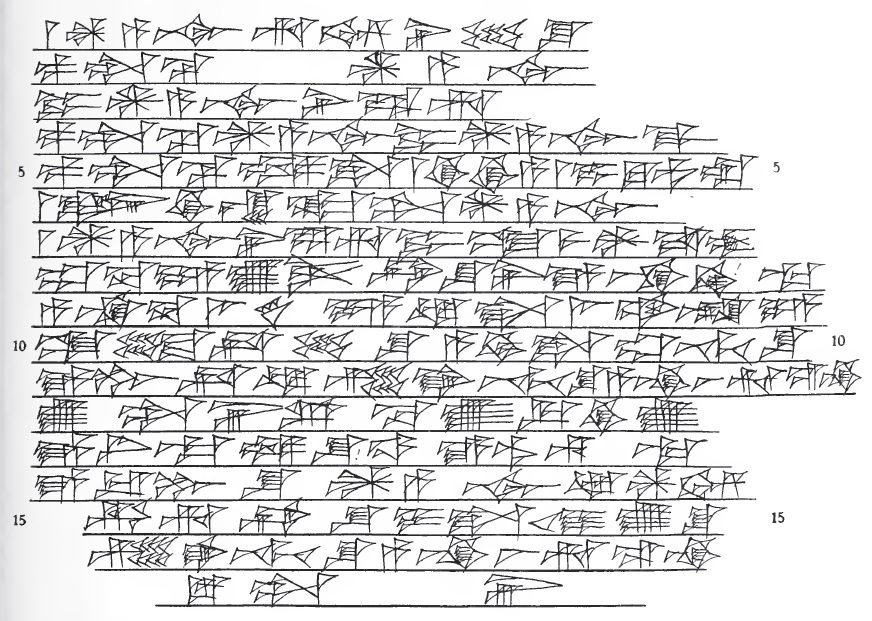Ashur-rim-nisheshu on:
[Wikipedia]
[Google]
[Amazon]
Aššur-rā’im-nišēšu, inscribed md''aš-šur-''ÁG-UN.MEŠ''-šu'', meaning “(the god) Aššur loves his people,” was ruler of
 All three extant ''Assyrian Kinglists''''Khorsabad Kinglist'' iii 7.''SDAS Kinglist'' iii 1.''Nassouhi Kinglist'' iii 11. give his filiation as “son of Aššur-bēl-nišēšu," the monarch who immediately preceded him, but this is contradicted by the sole extant contemporary inscription, a
All three extant ''Assyrian Kinglists''''Khorsabad Kinglist'' iii 7.''SDAS Kinglist'' iii 1.''Nassouhi Kinglist'' iii 11. give his filiation as “son of Aššur-bēl-nišēšu," the monarch who immediately preceded him, but this is contradicted by the sole extant contemporary inscription, a
Assyria
Assyria ( Neo-Assyrian cuneiform: , romanized: ''māt Aššur''; syc, ܐܬܘܪ, ʾāthor) was a major ancient Mesopotamian civilization which existed as a city-state at times controlling regional territories in the indigenous lands of the A ...
, or ''išši’ak Aššur'', “vice-regent of Aššur,” written in Sumerian: PA.TE.SI (=ÉNSI), c. 1408–1401 BC or c. 1398–1391 BC (short chronology
The chronology of the ancient Near East is a framework of dates for various events, rulers and dynasties. Historical inscriptions and texts customarily record events in terms of a succession of officials or rulers: "in the year X of king Y". Com ...
), the 70th to be listed on the Assyrian King List
The king of Assyria (Akkadian: ''Išši'ak Aššur'', later ''šar māt Aššur'') was the ruler of the ancient Mesopotamian kingdom of Assyria, which was founded in the late 21st century BC and fell in the late 7th century BC. For much of its ear ...
. He is best known for his reconstruction of the inner city wall of Aššur.
Biography
 All three extant ''Assyrian Kinglists''''Khorsabad Kinglist'' iii 7.''SDAS Kinglist'' iii 1.''Nassouhi Kinglist'' iii 11. give his filiation as “son of Aššur-bēl-nišēšu," the monarch who immediately preceded him, but this is contradicted by the sole extant contemporary inscription, a
All three extant ''Assyrian Kinglists''''Khorsabad Kinglist'' iii 7.''SDAS Kinglist'' iii 1.''Nassouhi Kinglist'' iii 11. give his filiation as “son of Aššur-bēl-nišēšu," the monarch who immediately preceded him, but this is contradicted by the sole extant contemporary inscription, a cone
A cone is a three-dimensional geometric shape that tapers smoothly from a flat base (frequently, though not necessarily, circular) to a point called the apex or vertex.
A cone is formed by a set of line segments, half-lines, or lines con ...
giving a dedicatory inscription for the reconstruction of the wall of the inner city of Aššur, which gives his father as Aššur-nērārī II (written phonetically on the third line of the illustration), the same as his predecessor who was presumably therefore his brother. With Ber-nādin-aḫḫe, another son of Aššur-nērārī who was given the title "supreme judge," it seems he may have been the third of Aššur-nērārī's sons to rule.
The cone identifies the previous restorers as Kikkia Kikkia (sometimes given as Kikkiya), inscribed m''Ki-ik-ki-a'Khorsabad Kinglist'', i 23.''SDAS Kinglist'', i 22. was according to the ''Assyrian King List'' (AKL) the 28th Assyrian monarch, ruling in Assyria's early period. He is listed within a ...
, Ikunum (1867–1860 BC), Sargon I (1859 BC – ?), Puzur-Aššur II, and Aššur-nārāri I (1547–1522 BC) the son of Ishme-Dagan II (1579–1562 BC). The reference to Kikkia's original fortification of the city is repeated in one of the later king's, Salmānu-ašarēd III, own inscriptions. It was recovered from an old adobe wall three meters from the northern edge of the ziggurat
A ziggurat (; Cuneiform: 𒅆𒂍𒉪, Akkadian: ', D-stem of ' 'to protrude, to build high', cognate with other Semitic languages like Hebrew ''zaqar'' (זָקַר) 'protrude') is a type of massive structure built in ancient Mesopotamia. It has ...
.
He was succeeded by his son, Aššur-nadin-aḫḫē II.
Inscriptions
References
{{DEFAULTSORT:Ashur-Rim-Nisheshu 15th-century BC Assyrian kings 14th-century BC Assyrian kings